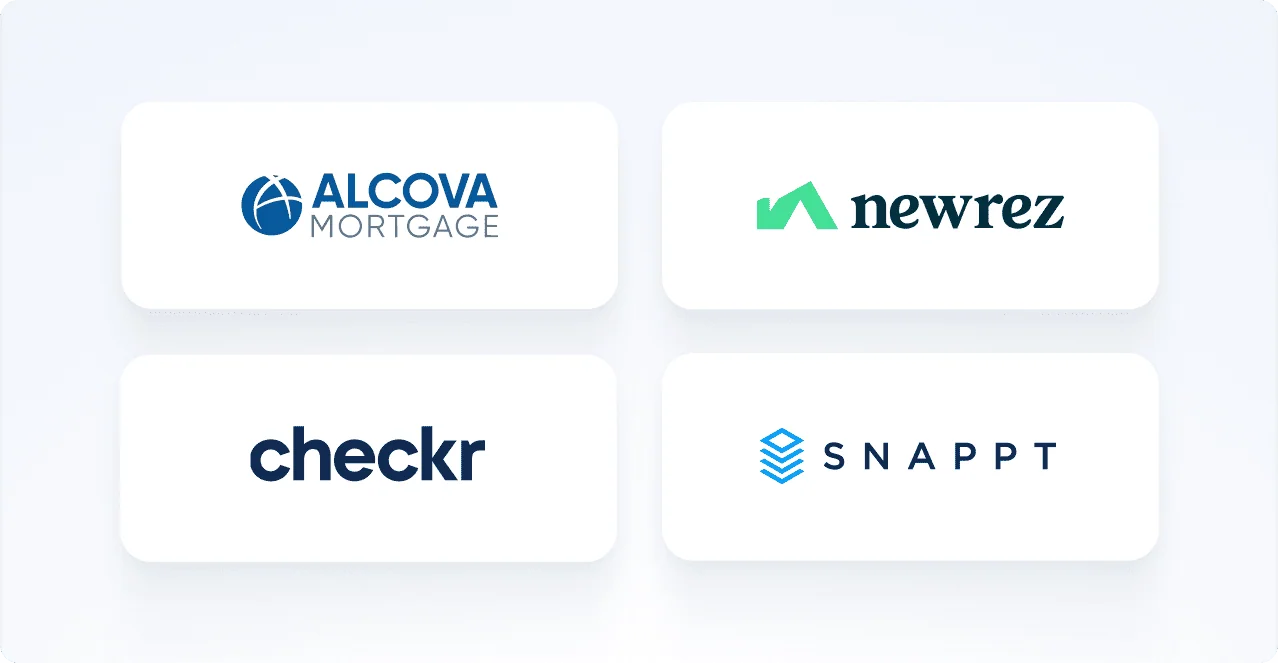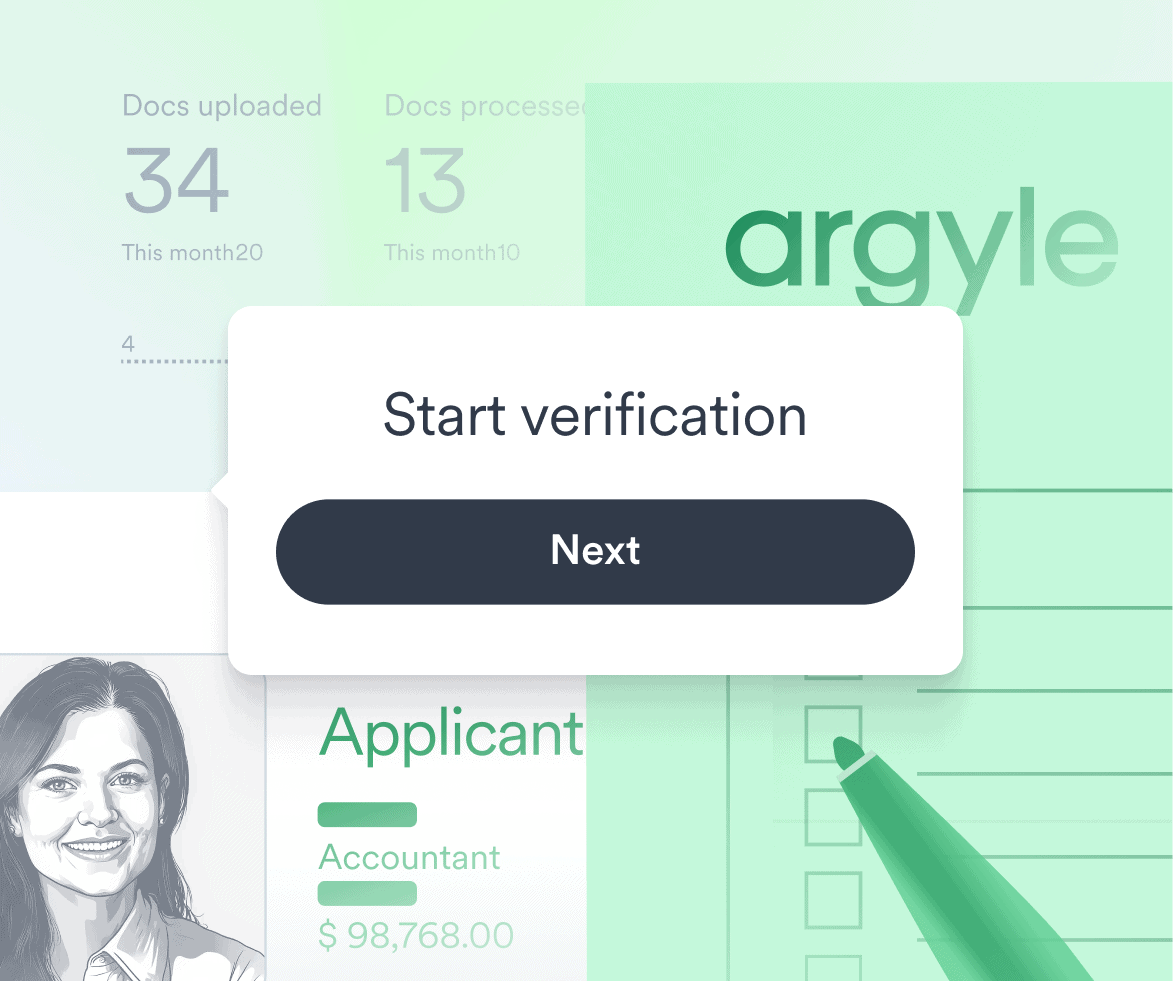Get the ins and outs of our direct-source, consumer-permissioned process.
Service providers like mortgage and personal lenders, tenant screeners, and background check companies use Argyle to verify income, employment, and assets in real time, directly from the source of truth: consumer payroll and bank accounts. In turn, service providers gain incredible operational efficiencies, mitigate risk, save money on verification costs, and provide their customers with a superior, seamless experience.But how exactly does Argyle obtain and verify payroll and asset data? We’re glad you asked. In this article, we explain how our direct-source verifications work.
A well-oiled data network

At the crux of our Direct Payroll and Direct Banking verification solutions is the principle of consumer permission. In other words, Argyle makes it possible for consumers to grant service providers secure access to the verifiable income, employment, and asset data stored in their payroll and bank accounts.
If you think of income, employment, and asset data as moving along a metaphorical railroad network, then you can think of Argyle as the party responsible for supplying the rail cars and laying, maintaining, and securing the tracks. Meanwhile:
- Consumers own the data on the trains and decide where the trains can and can’t go.
- Service providers receive the data from the trains.
To manage this process, Argyle provides consumers with a “switchboard.” We call it Argyle Link.
What is Argyle Link, and how do we use it to obtain consumer permission?
Argyle Link is the easy, low-friction module consumers interact with to grant service providers access to their income and employment data. Service providers simply embed Argyle Link in their web page or app or send it to consumers via email or SMS.
Argyle Link asks consumers for permission to access their data. The process for giving consent is easy:
- Consumers simply find and select their employer or payroll provider from our comprehensive database. (Browse our coverage here.)
- Then, they log in to their account, just like they would at work.
Once a consumer completes these steps, our secure technology takes over, verifying the income and employment data service providers need and sending it to them in the form of a GSE-authorized verification report. Argyle also pulls and delivers critical income documents like paystubs, W-2s, and 1099s, , all within a matter of seconds.
Best of all, the data connection is continuously maintained, ensuring service providers are always working from fresh and accurate information.
How Argyle customers receive verification reports and documents
The way service providers receive and view verification reports and documents depends on how they implemented Argyle:
Service providers who use Argyle Console, our no-code, web-based interface, can access all reports and documents via the Console dashboard.
Service providers who leverage our POS and LOS integrations will find reports and documents directly in consumers’ loan files within their existing systems.
Service providers who use our API receive a JSON file. Detailed instructions for incorporating the files into their existing systems can be found in our API documentation.
Argyle takes security seriously
When consumers grant Argyle permission to access their data, they are authorizing Argyle to serve as their designated data transfer agent. That role comes with a lot of responsibility, including a steadfast commitment to never aggregate, resell, or re-use their data under any circumstances.
We’ve also achieved and are committed to maintaining the highest levels of security standards. We’ve undergone SOC2, ISO 27001, PCI DSS, GDPR, and CCPA audits and follow military-grade encryption and secure storage protocols to protect user data and credentials.
The most reliable verification method on the market
Compared to alternatives, including manual verifications, verification databases like The Work Number, and even other consumer-permissioned verification platforms, Argyle’s ease, accuracy, and value is unmatched.
- Better data: Because Argyle pulls income, employment, and asset data in real time, directly from the source, service providers can be sure they are verifying based on the most accurate information possible. Data connections are also continuous and update automatically, ensuring reverifications are just as accurate. Other solutions, which can lag by weeks or more, can miss critical job status and income and asset changes.
- Truly automated workflows: Argyle automates both verification reports and income documentation retrieval, ensuring service providers can avoid the tedious process of manual paystub and tax form collection. And for mortgage lenders, only Argyle offers advanced and interoperable POS and LOS integrations for true system fluidity, allowing loan teams to jump in and out of tools without breaking momentum.
- Shorter turn times: These efficiencies allow service providers to process verifications faster, shaving days or weeks off of timelines.
- Lower verification costs: Argyle’s lower sticker price compared to The Work Number combined with the operational efficiencies we enable, service providers can expect savings of up to 80%.
Learn more about the differences between Argyle and The Work Number here.
The sky’s the limit
The power and potential of having direct-source, consumer-permissioned data at your fingertips can’t be overstated. The question for you shouldn’t be, “Do I need this?” but “What amazing things can I do with this?”
If you want to learn more about leveraging Argyle to meet your business objectives, reach out to our team.








